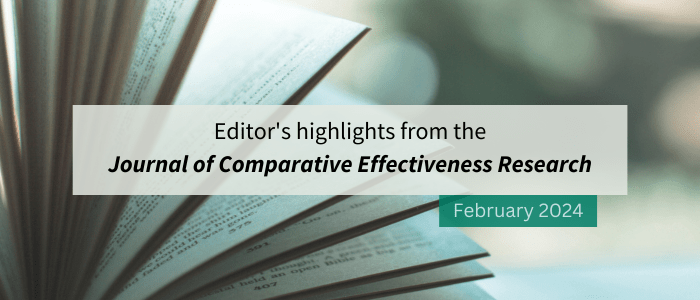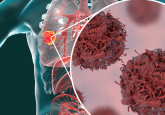Editor’s highlights from the Journal of Comparative Effectiveness Research – February 2024

In this monthly column, I share some of my Editor’s highlights from the latest issue of the Journal of Comparative Effectiveness Research (JCER), partner journal of The Evidence Base.
Welcome to this month’s round-up of my Editor’s picks from the February issue (Volume 13, Issue 2) of the Journal of Comparative Effectiveness Research (JCER). This month’s issue includes a pair of related papers – an original research paper and a perspective piece – on the use of external control (EC) arms, along with research on health-related quality of life at different disease stages of nonalcoholic steatohepatitis (NASH). Read more on my Editor’s highlights below.
Justifying the source of external comparators in single-arm oncology health technology submissions: a review of NICE and PBAC assessments
Single-arm trials (SATs) have attracted increasing discussion in recent years and are typically used in situations where it is either ethically or logistically difficult to include a control group; for example, in rare diseases, where patient recruitment is challenging. EC arms use external data that can be used to benchmark the potential relative efficacy and safety of a technology by serving as a control group for SATs. It is important that the type of EC arm used and why it has been chosen is explained when making submissions to a health technology agency (HTA). In their Research Article, Hernandez et al. (Takeda Pharmaceuticals America, Inc., MA, USA) reviewed submissions made to two HTAs to identify whether this justification was provided.
Estimating utility values for non-alcoholic steatohepatitis health states: a discrete choice experiment
NASH is a form of nonalcoholic fatty liver disease, which involves excessive fat in the liver, liver inflammation and over time can cause permanent liver damage. In a new study from Gallop et al. (Acaster Lloyd Consulting Ltd, UK), the authors explore the impact of NASH on health-related quality of life at different disease stages.
Navigating the unknown: how to best ‘reflect’ standard of care in indications without a dedicated treatment pathway in health technology assessment submissions
Finally, in an accompanying Perspective to their Research Article, Hernandez et al. (Takeda Pharmaceuticals America, Inc., MA, USA) outline the evidence generation challenges in designing clinical comparative effectiveness for a new technology when there is a lack of established standard of care, and propose considerations to facilitate the reliable integration of real-world evidence into HTA and decision-making based on the collective experience of the authors.
In addition to my Editor’s highlights, you can read the full February issue of JCER here, where all the articles are freely available to read. I encourage readers to get in touch and am happy to receive presubmission enquiries from anyone who is interested in submitting to JCER. Happy reading!
You may also be interested in:






